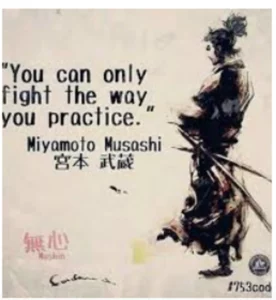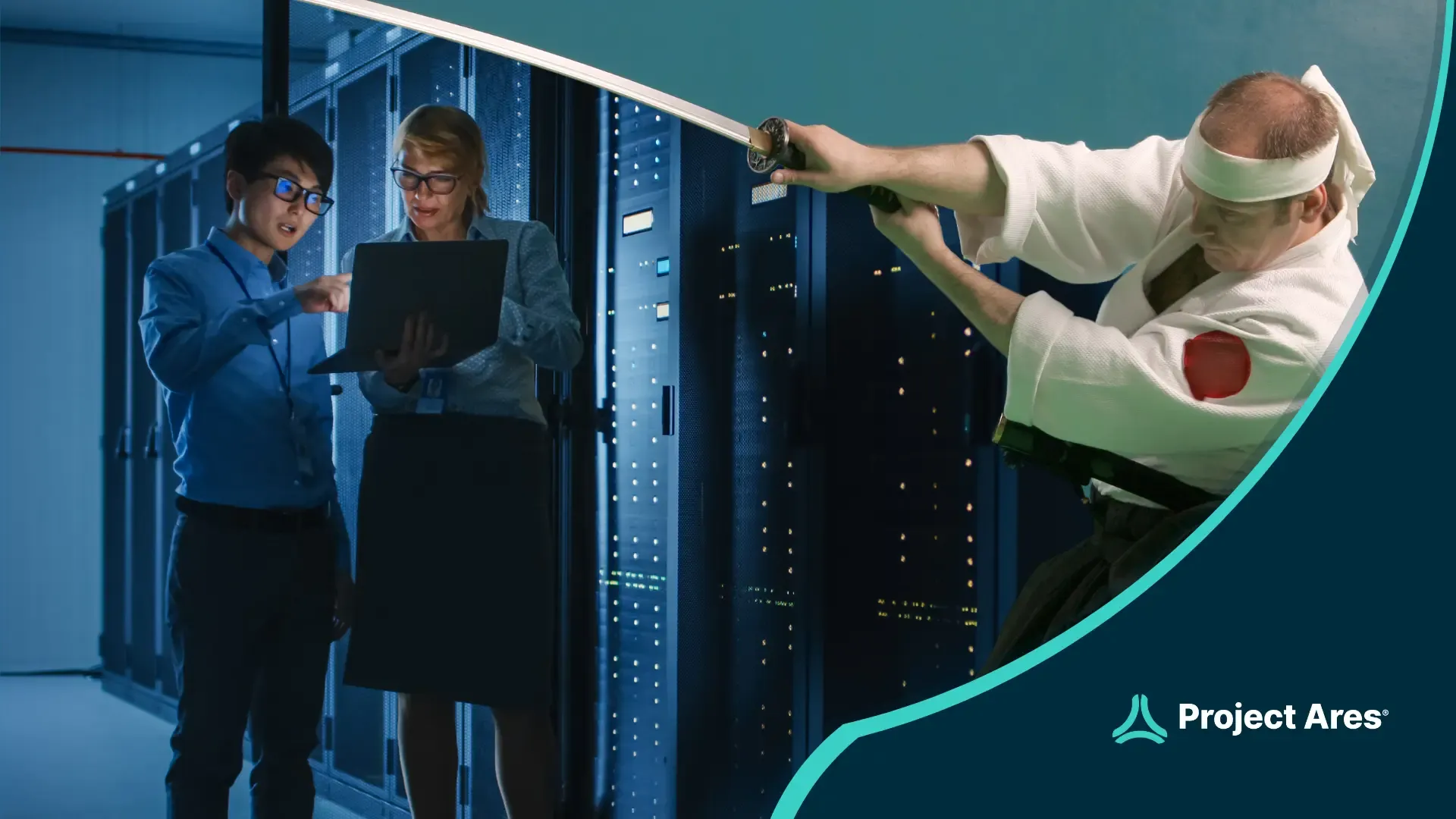Author: Circadence
Urban City Codes Embraces Hands-On Cyber Learning
Written by Circadence on . Posted in Blog. No Comments on Urban City Codes Embraces Hands-On Cyber Learning

Urban City Codes provides culturally-focused, community-based technology training solutions that empower under-represented, under-resourced, individuals, groups, and companies to develop and stay competitive in a rapidly changing world.
“Tangible digital skills development needs to happen faster than the rate of technological change and in particular for blacks and minorities. Otherwise, skills gaps can’t be fixed.”
URBAN CITY CODES
The Situation

Black and brown people make up 2% of the technology industry. As the demand for cyber protection increases, the need for skilled cyber professionals rises and interest in cyber careers rises too. Tondi Allen, social entrepreneur technology leader at Urban City Codes recognized the challenges black and brown people face when it comes to adopting technology to advance in careers.
As a result, she founded Urban City Codes to help prepare people for rapid changes in the digital world. Offering interactive in-house and remote training services, Tondi looked for unique “unorthodox” ways to teach cybersecurity. “cybersecurity is boring…it’s no secret. It’s been that way for years, but I always look for new ways to teach boring subjects,” she said.
The Solution

Tondi learned about Project Ares through LinkedIn and was attracted to the solution offering because of its gamified scenarios. She knew that if learning cybersecurity could be fun and engaging, it would lower the barriers to entry around technology adoption and use. In partnership with cyber instructor Daniel Addison, Urban City Codes launched “Cybersecurity Missions Training”, a 4-week course to help students of all cyber competency levels apply learned concepts to real-world scenarios to build skills for the workforce or become cyber consultants. The course included hands-on cyber labs within the Project Ares platform wrapped around a cyber course curriculum. Students were taught network analysis, Linux, Scripting, Traffic analysis, and Powershell fundamentals. They used the Project Ares labs to apply concepts learned in virtual instruction.
The course also provided recommended textbook readings to accompany the hands-on labs. The course was divided into units that addressed various cyber fundamentals including the use of tools, work roles, and tactics and procedures. A customized combination of cyber learning games and foundational and specialized scenarios were utilized per week to help students practice concepts discussed in class.
“Project Ares made learning cybersecurity fun, and it was a no-brainer to use the labs to teach in a gamified way.”
Tondi Allen
Student Benefits

They were able to take the concepts learned in the class and apply them in realistic hands-on labs to demonstrate a true understanding of cyber principles and practices. Immersive scenarios, team chat, and other features allowed students to develop and strengthen professional skills in communication, teamwork, collaboration, and problem-solving. Technical competencies learned were complemented by workplace competencies like critical thinking and organization.
Instructor Benefits

Tondi sees that cybersecurity is an exciting, well-paid, and currently relevant industry that draws in many people. However, she points out that the surface appeal needs to be supported by a serious approach to skill-building. Teaching the basics of how a computer works, teaching digital literacy…all those fundamental areas that help students learn cyber is critical to long-term career success. For Tondi, it’s important to meet learners where they are and understand their challenges first.
Urban City Codes looks forward to offering more hands-on courses for students so they have a pathway to pursue cyber certifications and full-time careers in the industry. The organization currently partners with more than 17 companies looking to hire entry-level cyber professionals. Tondi is confident students who complete the 4-week course will be well-equipped with the skills and confidence they need to break into the industry and thrive in it.
Capella University Graduate Takes Cyber Education into Her Own Hands, Literally
Written by Circadence on . Posted in Blog. No Comments on Capella University Graduate Takes Cyber Education into Her Own Hands, Literally

“It’s an excellent learning platform and you get out of it what you put in…”
Judy Aguiar, Capella University graduate
The Situation
Judy Aguiar has been working in the Information Technology field for about 40 years and recently graduated from Capella University with her Master of Science in Information Assurance and Cybersecurity. As her career progressed from managing tasks to managing people, she realized she was being pulled away from the daily hands-on activities that she enjoyed. Judy also felt she was missing some of the foundational cyber skills she needed to grow her career.“My positions in the past have been more managerial, so it’s been less hands-on over time, and I really wanted to get more hands-on and foundational experience,” she said.
The Solution
Judy went back to school and decided to specialize in Digital Forensics in her Master’s program. In the program at Capella University, she learned more about cyber tools and techniques using hands-on labs in Project Ares. The award-winning scenario-based platform helps learners like Judy gain cybersecurity skills and competencies that are applicable to the cyber workforce. When integrated into a cyber curriculum program like at Capella University, Project Ares hands-on labs provide the project-based tasks that learners crave, and teachers desire to improve learners’ employability and professional development.

“Capella University did it exceptionally well. There was a curriculum around our learningso that we could fully understand each command and why we were doing it,” Judy said.
That kind of critical thinking was shown in the course’s learning requirements:
- Students generated Mission Reports to explain why they were using certain tools, commands, and practices.
- Students explained what vulnerabilities existed that enabled an attack; as well as, what could be done differently in the future to mitigate the vulnerabilities.
“We used the Project Ares Media Center and conducted research on our own…It added an extra layer to the learning experience,” said Judy.
Within her Project Ares hands-on labs, Judy used foundational scenarios called Battle Rooms to learn new tools and techniques. She practiced different Battle Room and Mission scenarios repeatedly to hone her skills. She describes her learning experience as “addicting,” because she wanted to beat her own personal completion times and, “do it faster and more efficiently.” That work ethic, combined with the platform’s cyber learning games like Trivia Loot, Cylitaire, and Cyber Vault helped Judy actively engage and take control of her learning experience on her terms.
I had a lot of fun with it. I now feel comfortable using Linux—thanks to the Project Ares platform. I used to feel intimidated when trying to use Secure Shell, but now I know how to use it and feel at ease. I really gained a lot from using the Project Ares platform—most notably: Confidence!
Judy Aguiar, Capella University graduate

The Benefits
Project Ares hands-on labs have helped Judy in her day-to-day job, as well. Now, if she has to use cybersecurity applications such as Wireshark, Metasploit, Radare2, or recon commands, she says, “I now have that in my toolbelt…I know now to not be afraid of using a variety of tools.”
Judy is using her newfound skills to obtain other cyber industry certifications: planning to take the CIPP/US exam for Certified Privacy Professional and the CRISC Certification for Risk and Information Systems Control. Perhaps, she said, a doctorate degree is in the realm of possibility too.
What Does a Soldier-Artist Have in Common with cybersecurity Education?
Written by Circadence on . Posted in Blog. No Comments on What Does a Soldier-Artist Have in Common with cybersecurity Education?
Cybersecurity is the practice of defending all online aspects of daily life. Areas like work, school, government, healthcare, shopping, entertainment, and more — all rely on technology. To those who work to defend the digital parts of our daily lives, you must be prepared to always learn and improve; and we believe it starts with the right perspective.
“You can only fight the way you practice.” – Miyamoto Musashi, famous Japanese soldier-artist

Our inspiration comes from the legendary Miyamoto Musashi (opens new window) who was a famous Japanese soldier-artist. He built an amazing career starting at the age of 13! His philosophy was that to become the best, you must practice like you fight. As a result, he redefined what it meant to be a soldier for an entire country.
Interesting. Sure. But you might be wondering,
“How the heck does this relate to cybersecurity?”
Miyamoto, understood that being a great soldier was not something he could obtain by watching others. He had to grab his weapon, get into the ring, and work. Sometimes he got bruised and beaten. But, he was on a journey to get better and better.
Like being a soldier preparing for battle, a cybersecurity professional is a warrior in the fight against cybersecurity attacks and breaches. Being a cybersecurity warrior is a hands-on profession that cannot be learned by watching someone else. You must get into the ring and practice just like a soldier preparing for battle!
Think of Project Ares as the practice field and its learning exercises are your weapons. With a click of a link, you have a simulated secure cyber range that allows you to fine-tune your combat skills in a realistic environment.
We are working with cybersecurity educators who understand Miyamoto’s and Project Ares’ philosophy.
Example: Practical cyber Experience in Higher Education
The School of Technology at Capella Universit has been using Project Ares as the lab environment for the capstone course in its Information Technology, Information Assurance and Cybersecurity B.S. program. Capella University serves adult learners who consistently state that they want courses to teach them skills that they can apply to their “real-world” jobs. Meeting this goal was a prime reason for incorporating Project Ares. Capella uses the cyber lab in two ways. Ungraded assignments are set up with the automated assistant and learning hints enabled to assist students, guiding them through exercises as many times as they need to successfully learn the skills. Then a student must complete the exercise at least once without the help features to receive a grade. After working at their own pace, students are grouped together to tackle a complex learning scenario, collaborating in the way that ‘real world’ cyber teams often do. Through these interactions on the Project Ares cyber range, Capella students gain practical experienc .
After teaching over 70 students using Project Ares experiential labs, Dr. James Barker, the course instructor said, “Short of some form of internship as a cybersecurity engineer at an employer location – which is not a viable option for most adult learners – I cannot envision a better means of exposing learners to ‘real world’ security work.”
Example: Practical Cyber Application for Industry Certification
Recently, Project Ares and its partner Michael Kaplan, Director and Cybersecurity Instructor at Phase2Advang collaborated with Inteligenca on their 100 Women in 100 Days Cybersecurity Career Accelerator program. As part of the program, Mr. Kaplan taught a 12-week prep course for the ComptTIA Security+ certificatio . To put lecture concepts into practice, students used the Project Ares labs specifically for Data Forensics and System Security Analyst skills. Course evaluation survey results showed that
- 100% of the respondents would use Project Ares again to learn other cyber skills
- 100% of the respondents reported Project Ares made learning more engaging
- 99% of the respondents found benefit using Project Ares labs as training tools for future internships and jobs
True-to-Life Teaching and Training for Work Readiness
Whether an instructor uses Project Ares open-source lab with IT degree students or certification seeking professionals OR an enterprise uses Project Ares labs to keep their team sharp, it all comes back to the same premise: the more true-to-life the learning experience is, the more value and impact to ‘real life’ work.
At Project Ares we encourage putting practice and application to your all passions! If you are a cybersecurity instructor by day, then check out Project Ares to enrich your teaching or training programs. And whatever you aspire to after-hours – crafting the perfect meal for dinner with friends, upping your batting average for your softball team, improving your math skills to tutor your kids – may you find the tools and the proper environment/setting to make learning and practice fun.
The Nuances of Teaching and Training in cybersecurity
Written by Circadence on . Posted in Blog. No Comments on The Nuances of Teaching and Training in cybersecurity
Those who can, do. Those who can’t, teach.
This proverb reflects a really telling reality among cyber teachers and trainers today: We’re seeing many professionals who value the process of continual learning but themselves don’t have all the resources necessary to upskill for their own growth. Cyber educators are being pulled from the corners of IT departments or serving as adjunct faculty with full-time cyber jobs to support academic institutions’ needs to improve cyber education. Meanwhile, IT professionals are asked to lead teams of cyber analysts in addition to their day jobs. With market demands to educate and train aspiring and seasoned professionals proactively (in response to the industry’s widening skills gap), teachers and trainers in cybersecurity are feeling the pressure.
We are here to help! Our goal? To make teaching and training cybersecurity easier for everyone.
Here’s what we know…While they are able to teach or train fairly well, both types of cyber instructors are typically ill-equipped to address the nuances of cyber teaching and training. Gone are the days of regurgitating material as indicators of learning progress. Gone are the days when passing a Security+ Exam is the ultimate sign of victory. Today’s cyber workforce needs continual education of cyber practices to keep pace with the latest threats, tools, and tactics that secure business networks properly. Those needs demand more from today’s cyber teachers and trainers…A deeper understanding of the nuances of the industry and how to effectively help learners retain and apply learned concepts and skills. If you’re in a position where you are teaching or training a cohort on cybersecurity, first know and understand the distinctions of such a practice.
The Nuances of Teaching Cyber
- Balancing lecture and project-based instruction: There’s a time and place for lectures to present material and ideas about cyber history, culture, and terminology. Then, there is a time to help students use that knowledge and apply it to real-life cyber practice in project-based learning. Ensure your instruction does a bit of both so students can ‘see’ the relevance of what you are teaching and how it will play out in the actual workplace. Lectures are easy enough to conduct via Zoom or Teams calls using a presentation slide deck but make sure that lecture is supported by a cyber range platform that allows students to get hands-on keyboard experience learning ports and protocols or regular expressions, for instance.
- Understanding terminology, concepts, and history: Maya Angelou once said, “If you don’t know where you’ve come from, you don’t know where you’re going.” While you may have read headlines about the latest Facebook phishing campaign, teaching cyber requires a deep understanding of the roots of many of today’s practices. How has the evolution of the Internet, individual moguls, and innovators in the space contributed to the current state of the industry as we know it today? Understanding those nuances will position your teaching in a richer manner so you can help students ‘see’ the progression of practices and answer the ‘why do we do X this way?’
- Experience using the latest cybersecurity tools: Free or paid, commercial or open-source, the security tools used by cyber practitioners are always evolving to make their jobs easier and more effective. Teaching students how to use an outdated version of Python will only hinder the student’s success when they’re asked by a hiring manager if they’ve worked with Python 3.9.0.
- Knowledge of adversarial motives: If you ask most modern-day cyber practitioners today, they’ll tell you how imperative it is to ‘get in the mind of the hacker’. Project Are’s Security Manager TS Reed said it well:
“Security is always changing: the way people build it, the way people attack it. You have to continuously learn and teach yourself the latest and greatest practices…Hackers are attacking constantly and finding new ways to infiltrate networks. We have to stay as close to them as possible.”
Using this knowledge, cyber teachers can educate students about why and how systems become vulnerable enough to attack in the first place, so when they’re penetration testing or monitoring for vulnerabilities, they know what ‘red flags’ look like.
- Understanding of employer demands: Teaching cyber is more than just helping students know about technical terms and abilities. Today’s employers are looking for well-rounded, communicative, innovative, critical thinking, problem-solving, creative professionals who also possess the required technical skills of a cyber practitioner.
Central Virginia Community College coding professor Corrine Hoisington stressed in a ‘Driving Educator Success in 2021’ webinar , the importance of building ‘soft skills’ among today’s students and teaching those skills as heavily (if not more so) than the technical requirements.
- Reaching students where they are today: How an older generation learned is different than how today’s students learn. They grew up with video games in hand and that cultural reality has influenced how they cognitively absorb information and learn behavior. Today’s cyber educators should consider new ways to connect with students on an individual and cultural level and adapt their teaching delivery using gamification to align with those learning preferences.
To see how some of these nuances are addressed in cyber teaching and delivery, check out how Michael Kaplan of Phase2 Advantage instructed students online, in a 12-week Security+ course using hands-on, gamified labs in Project Ares to reinforce conceptual instruction.
At Project Ares, we work with many cyber educators every day to understand the plethora of challenges they face teaching cybersecurity and we equip them with engaging learning labs that can be accessed anytime, anywhere, from a browser. From budget constraints to staffing shortages to distance learning (opens new window), to enhancing the cyber curriculum with hands-on labs, today’s teachers need pathways to success so they are empowered to support the next generation of cyber warriors.
Three Essentials to Successfully Put People to Work in cybersecurity: Soft Skills, Hands-on Practice, Lifelong Learning
Written by Circadence on . Posted in Blog. No Comments on Three Essentials to Successfully Put People to Work in cybersecurity: Soft Skills, Hands-on Practice, Lifelong Learning
Skills gaps, certifications, new tools, employability – there are many challenges and elements to consider when putting people work in cybersecurity. What skills do prospective employees need to be work ready? How ought professionals demonstrate their capabilities? What aspects in the recruitment process should candidates be aware of? These are some of the questions that were discussed in a recent webinar with expert panelists Steve Wilson and Sunny Jassal of British Columbia Institute of Technology and Michael Kaplan of Phase2 Advantage .
Build Soft Skills
It’s no surprise that employers looking to fill open cyber positions want to hire someone with technical prowess but also effective communication skills. ‘Soft skills’ tend to be overlooked in the industry yet, as the panelist’s explained, are critical to thriving in the industry. Michael Kaplan noted that the impact of someone who has good soft skills is invaluable to making a good first impression in an interview.
Imagine a candidate who walks into an interview where the hiring manager asks if they know Wireshark. If the candidate had instilled confidence and competency in his abilities, his reply of ‘take me to a computer and I can show you’ would certainly make him stand out among the pile of resumes.
Hands-On Cyber Practice
Do certifications or experience matter more when applying for a job in cyber? That’s the chicken or the egg question in the industry…Naturally, certifications are the bread and butter of many cyber career pursuits and our panelists recognized the value they bring to the table, especially when coupled with hands-on practice. Sunny said certifications are still relevant and they demonstrate to an employer that you’re passionate about the subject. It shows you “have the grit to prove yourself,” he said. Yet certifications only carry a candidate so far in the hiring process. They may get you the interview but may not get you the career. That’s where hands-on cyber range experience comes into play. Panelists touted the value of hands-on experience working with real cyber tools in realistic environments in order for candidates to show their skills to prospective employers. You may have the certs but if you can’t apply what you learned from obtaining that cert, you’ve wasted your time and your employer’s money, Michael stated. Sunny shared some of his personal barriers when entering the field, starting out first as an IT professional and transitioning into cybersecurity (a common career path transition for many). How do I build a lab? Where do I look for resources or a playbook? Those were some of the questions Sunny had to answer himself since gamified scenario tool sets weren’t readily available at the time. He continued on to say how important it is to think like an adversary and it requires a mind shift that can be cultivated with hands-on training available.
Lifelong Learning in Cyber
The dynamic nature of the cyber profession not only places barriers on those seeking employment but also on those training and teaching cybersecurity. We often neglect the “trainers” or those who are teaching students about cybersecurity, Michael noted. There must be a top—down approach whereby trainers and educators are equally comfortable teaching cyber, even if (and oftentimes) their background isn’t in that discipline.
“What about the folks who are in professional development or in technical college systems who wake up one morning and find themselves in charge of teaching a technical cyber program? It’s putting them at a serious disadvantage,” said Michael, if they are not trained to teach curriculum that is enriching and hands-on.
cybersecurity is a lifelong learning journey that extends beyond what certifications provide. Even remote work as a result of COVID has impacted how today’s businesses harden network infrastructure, and infosec professionals need to be ready to adapt to anything the industry throws their way—requiring continual learning.
Academia and workforce development companies are adapting to these shifts by building courses that surround certifications so that by the time a learner in a 2- or 4-year program graduates, they will have taken a course that prepares them to pass a certification exam. A blended learning experience is a shift that Steve predicts, will continue to gain traction across institutions that are looking to put people to work in cybersecurity.
Check out the webinar where Steve, Sunny and Michael share more about how they’re helping put people to work and teach in cybersecurity.
Preparing Today’s Workforce for the Cybersecurity Careers of the Future
Written by Circadence on . Posted in Blog. No Comments on Preparing Today’s Workforce for the Cybersecurity Careers of the Future
Companies of all shapes and sizes are looking to ramp up their cybersecurity readiness – and that process often starts with building and training a talented team of cyber professionals. The skills gap may be wide and the demand to fill open positions high, but the opportunities that abound for the cybersecurity workforce are even greater. So where can individuals responsible for putting people to work and developing the cyber workforce turn for support and guidance?
Join Circadence and its education partners in a lively panel discussion where they will share some of the top cybersecurity programs and professional development avenues that can propel tomorrow’s frontline defenders to success in an evolving industry.
Expert Panelists

Steve Wilson
British Columbia Institute of Technology

Sunny Jassal
British Columbia Institute of Technology

Michael Kaplan
Phase2 Advantage

Atendees will Learn
- Top cyber professional development programs for new and seasoned candidates
- The current skills and proficiencies of today’s cyber workforce need to thrive
- Resources for candidates to proactively develop cyber competencies for any skill level

Save time teaching cybersecurity with project-based learning in Project Ares
Written by Circadence on . Posted in Blog. No Comments on Save time teaching cybersecurity with project-based learning in Project Ares
Grading, technology adoption and managing labs can take today’s cyber educators away from what matters most: teaching their students about cybersecurity and preparing them for the workforce. A study from the Organisation for Economic Co-operation and Development found that “teachers spend half of their working time in non-teaching activities…” It’s time to give teachers their time back.
Give students an asynchronous learning experience complete with hands-on, work-based practice in Project Ares – a gamified cyber-range-as-a-service platform.
A hands-on cyber profession requires hands-on experience.
Built-in, ready-to-implement foundational and specialized exercises are reflective of modern workplace cyber threats and incidents—so educators can effectively align lesson plan topics and learning objectives to the skills acquired in Project Ares. Educators can easily review and assess student learning progress in the platform in the Trainer View section of the platform and even act as an adversary in scenarios to guide and challenge students.
DOWNLOAD A SAMPLE CYBER CURRICULUM that uses Project Ares cyber range labs.With Project Ares, cyber educators can spend time teaching again. They can work collaboratively with students to address learning gaps and strengths and they will have peace of mind knowing the skills students are learning (forensics, scripting, incident response, etc.) are acquired using real tools like Splunk, Kali Linux, and Wireshark.

Several educational institutions at the Secondary and Postsecondary level have already chosen Project Ares as the hands-on learning lab component to their teaching objectives.
Short of some form of internship at an employer as a cybersecurity engineer, I cannot envision a better means of exposing learner’s to “real world” security work. – Dr. James Barker, Capella University
Project Ares provides the experiential learning component that enhances any cyber curriculum. With skill and talent gaps in demand, students are in need of real hands-on-keyboard experience in the classroom so they can build the confidence and skills needed to enter the workforce (or at least go into a job interview) with confidence and competency.
CYBER EDUCATORS: Make distance learning cyber courses more engaging while conserving time and energy on course development and improvements. It is never too late to start improving cyber class learning.









